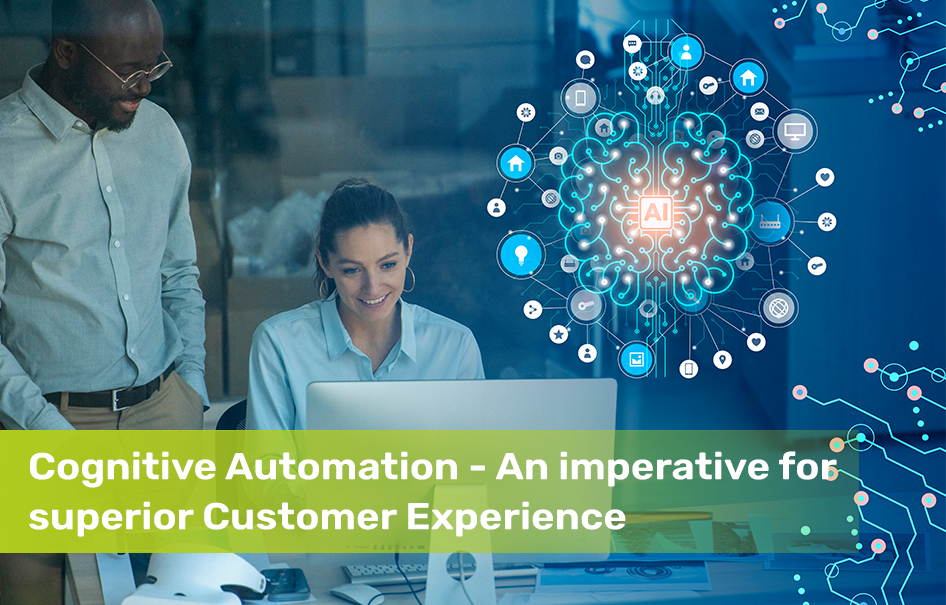Cognitive Automation - An imperative for superior Customer Experience
The traditional property and casualty insurance business model has resisted change for a long time. Although advances in technology have slowed the pace of change, we have reached a point where insurers must go digital. Long-term dependence on many internal systems and solutions has been established, but it’s now time to turn to automation to drive straight-through processing. You don’t want to interrupt your business by changing entire systems or re-engineering procedures. When you use automation technology to transform your business processes, you’ll realize immediate cost and productivity savings and long-term strategic advantages. Although it may be tough to know where to begin, there is a compelling incentive to act now rather than later.
Customer experience expectations drive technological advancements, and insurers realize that to continue in business, they must alter their focus to provide a better customer experience. Automation is a method to provide better products and services to customers at a reduced cost without adding more people to the workforce. However, this will necessitate a change in the present business model, which is characterized by resistance to change. Automation is seen as a tool for clever insurance companies to save costs while increasing revenue.
Data – The Automation Grey Cells
Insurance companies now have access to new data sources because of technology and automation improvements. These data sources must be managed and leveraged for optimal utilization to improve customer experience and increase revenue from existing or new revenue streams.
Cognitive Automation Areas for Insurers
- Process Improvement: To improve processes, insurers must be able to evaluate and review processes. Processes that utilize Robotic Process Automation include the steps in the task or process, such as exception handling, transaction details or errors.
- New business and underwriting: Insurers spend a lot of time gathering data for underwriting, and cognitive process automation may help speed up the process by extracting data from a range of sources, both internal and external. Underwriting, as a process, also entails a number of mathematical calculations that may be automated.
- Intelligent Claims Processing: Claims processing, like underwriting, necessitates data collecting from internal and external sources, and cognitive automation makes this process significantly more efficient. The amount of manual effort associated with claims processing can be reduced by up to 75% by automating the process.
- Regulatory Compliance: Because Cognitive Process Automation is based on user-defined business rules, it’s perfect for businesses with rigorous regulations, such as property and casualty insurance. Whether it’s new tax changes, General data protection, or Health insurance portability and accountability regulations, process automation makes it easier to stay compliant with insurance regulations.
- Service Communications: Automation can notify customers of important information, such as policy renewal, or automatically respond to standard queries like the issuance of tax certificates.
Business Benefits of Cognitive Automation
- Improve Customer Experience – Every procedure or stage in the customer journey that automation removes or accelerates enhances the customer experience. When it comes to providing a superior client experience, insurers must take advantage of automation as much as possible.
- Cost savings: Cognitive Automation saves money in the long term and minimizes the need for manual labor in processing.

